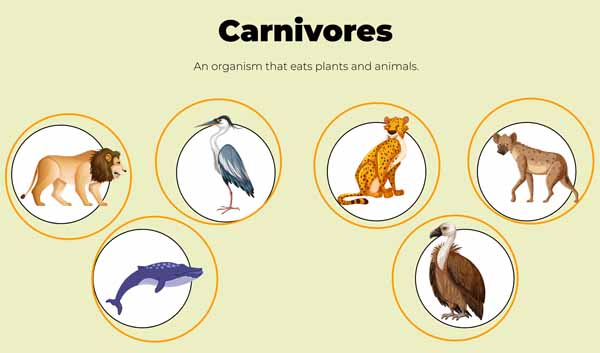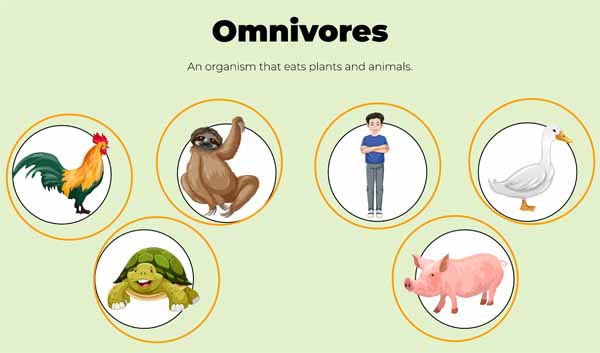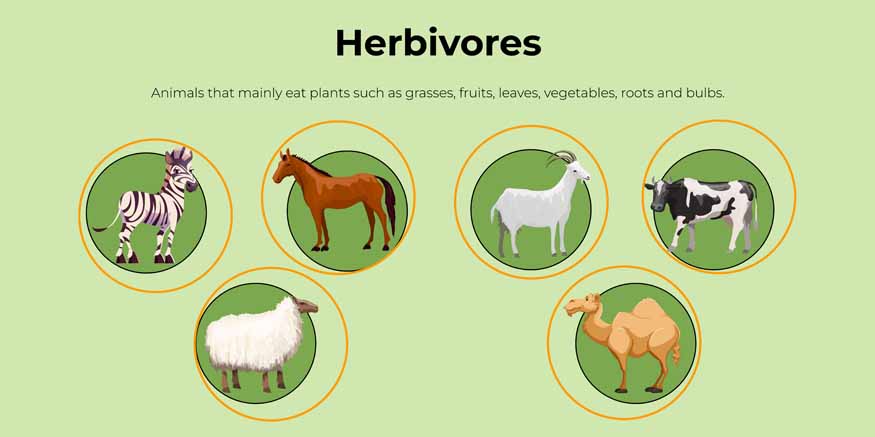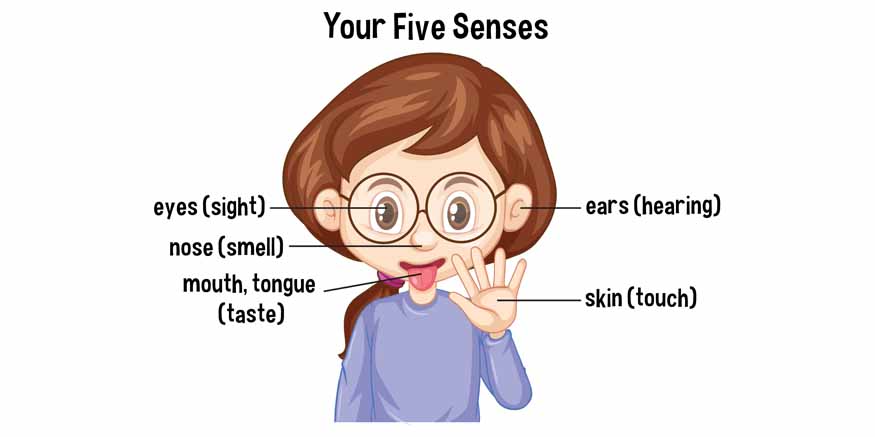Did you know?
A giraffe’s tongue can measure up to 20 inches long! Imagine having such a long tongue to reach those tasty leaves high up in the trees.
You might have seen animals in your yard or the forest eating different kinds of food. Some animals munch on tasty plants while others prefer a meat feast, and some enjoy a mix of both!
One of the most interesting ways to classify animals of different sizes and shapes is based on their diets. Understanding what animals eat can help us learn more about their behaviour, habitats, and how they fit into the ecosystem. In this article, you will learn the three main types of animals based on their diets — herbivores, carnivores, and omnivores.
Herbivores — Definition
Herbivores are animals that eat only plants. Their diet comprises leaves, grass, fruits, flowers, and other plant materials. Herbivores have uniquely shaped teeth and digestive systems that help them process plant matter efficiently. They play a crucial role in the ecosystem by helping to maintain plant populations and serving as prey for carnivores.
Key Characteristics of Herbivores
Teeth: Herbivores have flat, broad teeth that are perfect for grinding and chewing plant material.
Digestive System: Many herbivores have complex digestive systems with multiple stomach chambers, like cows, to help break down tough plant fibres.
Behaviour: Herbivores often spend a lot of time eating because plants are less energy-dense compared to meat.
Examples of Herbivores
- Elephant: Elephants are known for their massive size and long trunks. They eat a variety of plant materials, including leaves, branches, fruit, and grass.
- Giraffe: Giraffes have long necks that allow them to reach leaves high up in trees. Their favourite food is acacia leaves.
- Rabbit: Rabbits are small herbivores that eat grass, leaves, and vegetables. They have sharp incisors to help them nibble on plants.
- Cow: Cows are domesticated herbivores that primarily eat grass. They have a specialised stomach with four compartments to digest plant material.
- Fun Fact: Did you know that an adult elephant can eat up to 300 pounds of food in a single day?
Carnivores — Definiton
Carnivores are animals that eat only meat. They are often predators, hunting and killing other animals for food. Carnivores have sharp teeth and claws that help them catch and consume their prey. They play a vital role in the ecosystem by controlling the population of other animals and maintaining a balance in the food chain.

Key Characteristics of Carnivores
- Teeth: Carnivores have sharp, pointed teeth called canines that are perfect for tearing meat. They also have strong jaw muscles.
- Digestive System: Carnivores have simple digestive systems that are designed to break down protein and fat efficiently.
- Behaviour: Many carnivores are solitary hunters, while others hunt in packs, like wolves.
Examples of Carnivores
- Lion: Lions are powerful predators known as the “king of the jungle.” They hunt in groups called “pride” and primarily eat large mammals like zebras and antelopes.
- Tiger: Tigers are solitary hunters who stalk and ambush their prey. They eat deer, wild boar, and other large animals.
- Hawk: Hawks are birds of prey that hunt small mammals, birds, and insects. They have keen eyesight and sharp talons to catch their prey.
- Shark: Sharks are marine carnivores with a fearsome reputation. They eat fish, seals, and even other sharks.
- Fun Fact: Did you know that a tiger’s roar can be heard up to two miles away?
Omnivores — Definition
Omnivores are animals that eat both plants and meat. They eat a wide variety of foods, which helps them adjust to different surroundings and what food is available. Omnivores have a combination of teeth that can process both plant and animal materials. They play an important role in the ecosystem by controlling the populations of both plants and animals.

Key Characteristics of Omnivores
- Teeth: Omnivores have a mix of flat teeth for grinding plants and sharp teeth for tearing meat.
- Digestive System: Omnivores have digestive systems that can process various foods, including proteins, fats, and carbohydrates.
- Behaviour: Omnivores are often opportunistic feeders, meaning they eat whatever is available.
Examples of Omnivores:
- Bear: Bears are versatile eaters that consume berries, nuts, fish, and small mammals. Different bear species have varying diets, but most are omnivorous.
- Human: Humans are one of the most well-known omnivores. Our diet includes fruits, vegetables, grains, and meat.
- Pig: Pigs are domesticated omnivores that eat a variety of foods, including fruits, vegetables, and small animals.
- Raccoon: Raccoons are known for their adaptability and opportunistic feeding habits. They eat fruits, nuts, insects, and small animals.
- Fun Fact: Did you know that raccoons can remember the solution to a task for at least three years?
Differences Between Herbivores, Carnivores, and Omnivores
The key differences between herbivores, carnivores, and omnivores to reinforce your understanding —
Type | Diet | Key Characteristics | Examples |
Herbivores | Plants | Flat teeth for grinding, complex digestive systems | Elephant, Giraffe, Rabbit, Cow |
Carnivores | Meat | Sharp teeth for tearing, simple digestive systems | Lion, Tiger, Hawk, Shark |
Omnivores | Plants and Meat | A mix of flat and sharp teeth, adaptable digestive systems | Bear, Human, Pig, Raccoon |
Conclusion
Understanding the different types of animals based on their diets gives us valuable insights into the natural world. Each animal plays a unique role in the ecosystem, contributing to the balance and harmony of nature. Whether it is the plant-munching herbivores, the meat-eating carnivores, or the versatile omnivores, every animal is an essential part of the intricate web of life.
For more such informative/interesting blogs, visit Mother’s Pet Kindergarten.













Recent Comments